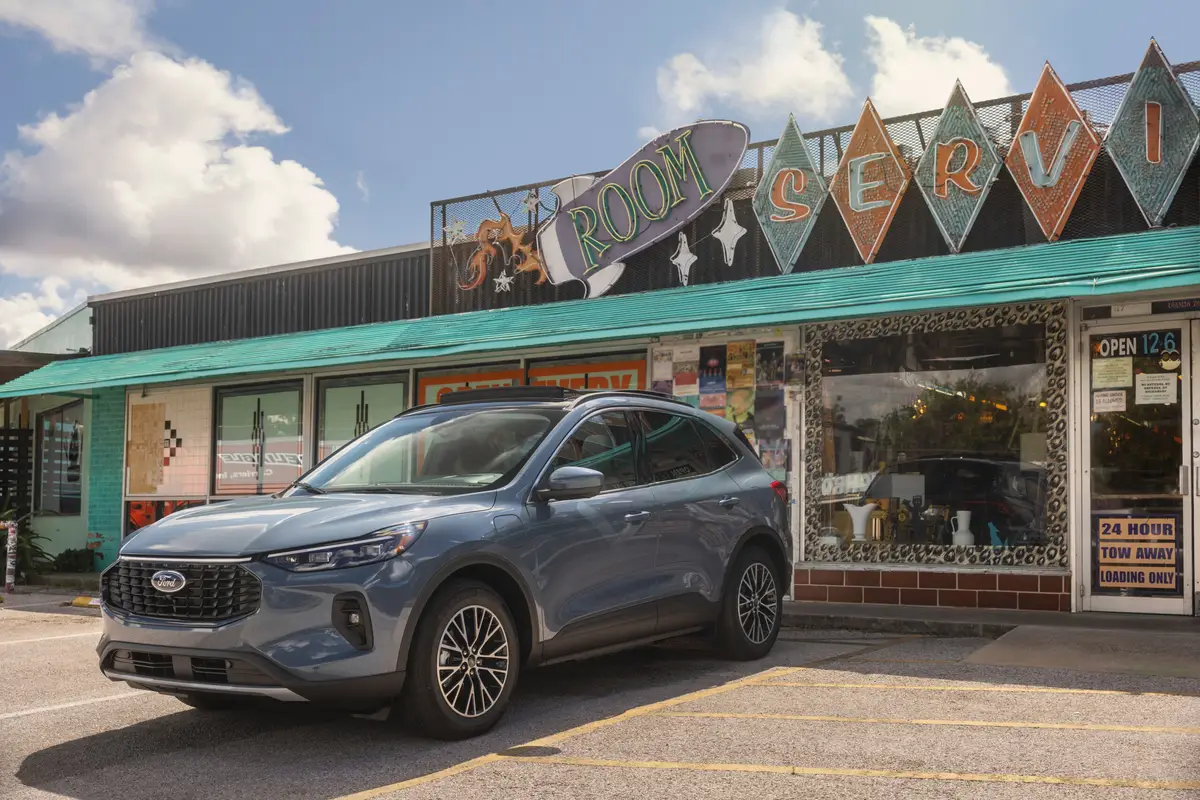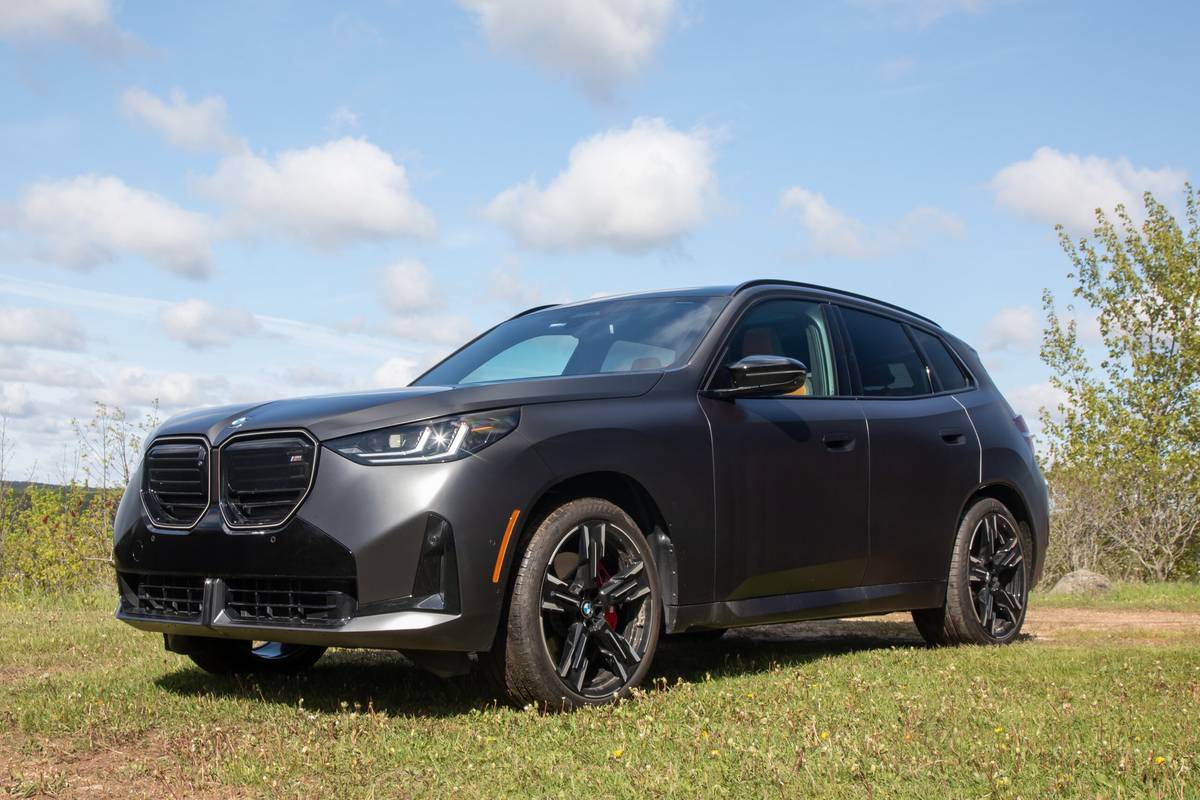Star-Telegram.com's view
Mazda finally has its own sport utility vehicle, not just one either built by Ford or copied from a Ford design.
And the all-new 2007 Mazda CX-7 is a worthy entry in the SUV market at a time when sport utilities are finding the going tough.
As one of the new “crossover” models – built on a car chassis, rather than that of a truck as the traditional SUVs have been – the CX-7 fits right in with the way the sport utility segment is moving.
Automakers increasingly are abandoning the once-popular truck-based models and rolling out more of these user-friendly crossovers.
They offer the grace, style, performance and refinement of a car, while retaining the high profile and interior roominess of the sport utility.
Mazda has been selling sport utilities for years, but never one entirely its own. The first Mazda SUV, the Navajo, arrived for 1990, and was just a two-door version of the Ford Explorer, built in a Ford plant. The vehicle arrived at the time that the four-door Explorer was leading the SUV boom.
But the Navajo never became a serious player because it had just two doors. The whole SUV phenomenon that began with the Explorer’s introduction came about because the automakers finally realized that consumers wanted four doors on this type of vehicle. Mazda never got a four-door version of the Explorer, however, because Ford’s dealers objected, and Ford acquiesced. Ford owns a 33.4 percent stake in Mazda, which for years allowed the No. 2 U.S. automaker to keep Mazda under control rather than to let it flourish as its Japanese rivals Toyota, Honda and Nissan have.
That’s changing now, as Mazda finally has some good products in its showrooms to allow it to compete well against its Japanese competitors. The Mazda 3 and Mazda 6 sedans are considered to be among the very best in their segments, for instance. The SUV market, though, is where Mazda needs to catch up.
There is another SUV in the Mazda lineup, the Tribute, but it is a clone of the Ford Escape, and in the U.S. market, it is built by Ford for Mazda. Mazda builds some Tributes at one of its own factories in Japan for other markets, but that vehicle still is based on the Escape.
The Escape/Tribute actually have some Mazda heritage, however – these are compact crossover SUVs based on the architecture of the Mazda 626 sedan. And Mazda was allowed to differentiate the Tribute from the Escape by creating its final exterior and interior designs in a Mazda studio, rather than just taking what Ford designed.
With the CX-7, though, the vehicle is a Mazda from the ground up. It could have been yet another clone of a vehicle developed primarily for Ford, as Ford and its Lincoln luxury brand are introducing this fall two completely new midsize crossovers – the Ford Edge and Lincoln MKX (pronounced “Mark-X”), based on the chassis architecture of the current Mazda 6 sedan.
The Edge and MKX are very similar to each other, even down to using the same engine and transmission. The Edge, though, will have a mass-market price, while the MKX will be a luxury version of the Edge with a correspondingly higher price tag.
The CX-7, which looks a lot like the Edge and MKX, actually is a significantly different vehicle, Mazda says.
While the Edge and MKX were adapted from the Mazda 6, which also was the basis for the new 2006 Ford Fusion, Mercury Milan and Lincoln Zephyr sedans, the CX-7 is a mix of Mazda architecture, Mazda spokesman Jeremy Barnes said shortly after the vehicle was introduced in January at the Detroit auto show.
“The CX-7’s rear suspension is from the Mazda 5, while the front suspension is a combination of the Mazda 6 and the Japanese version of the MPV,” he said. “The engine and all-wheel-drive system come from the MazdaSpeed 6.”
The Mazda 5 is a compact minivan that arrived for 2006, and the MazdaSpeed 6 is a performance-oriented version of the Mazda 6 sedan, but built in Japan rather than at Mazda’s Flat Rock, Mich., plant where the regular Mazda 6 models are assembled. The five-passenger CX-7 is aimed more toward performance-oriented drivers, and comes with a turbocharged 2.3-liter four-cylinder engine rated at 244 horsepower and 258 foot-pounds of torque. The engine is borrowed from the MazdaSpeed 6.
That engine is connected to a six-speed automatic transmission, and the vehicle is offered with either front- or all-wheel drive. Both the engine and transmission come from Mazda, whereas with some Mazda vehicles, either Ford engines or transmissions are used (or both).
Prices start at $23,750, which puts the CX-7 between the Honda CR-V and the Nissan Murano, and it should appeal to consumers who have considered either one of those vehicles, Barnes said.
Mazda will continue to sell the Tribute; the CX-7 will just add a second SUV to the company’s lineup, he said. “It’s going to drive more like a passenger car than the Tribute. And with the 244 horsepower, the CX-7 will be for anyone looking for an engaging driving experience.”
The company isn’t through with new SUVs, however. A third model, the CX-9, also goes on sale this fall. It will be a seven-passenger midsize crossover that is very similar to, although larger than, the CX-7. Mazda unveiled the CX-9 at the New York auto show in April.
But Mazda says that even though the CX-9’s styling “echoes the CX-7,” it is “not a lengthened three-row CX-7, and CX-7 is not a shorter-wheelbase CX-9.”
The CX-9, essentially the Mazda version of the Edge/MKX, is intended for those who need the extra row of seats. It will come with the new Ford 3.5-liter V-6 engine used in the Edge/MKX.
As for the CX-7, our test model was the top-of-the-line Grand Touring model with all-wheel drive (base price $28,000 plus $560 freight). It came with a bunch of options that raised the sticker to $32,565 (including freight), more than $8,000 above the entry-level CX-7.
This is a great-looking vehicle, and our tester was equipped with just about everything you can get on the CX-7, including leather interior (included in the Grand Touring price) and the technology package ($4,005), which added a power sunroof, nine-speaker Bose audio system, navigation system with rearview camera, and keyless entry/start (where you just keep the key in your pocket). About the only thing left to add would be the DVD rear entertainment system, which Mazda says will be available later in the model year. You might think that a vehicle of this size – it weighs nearly 4,000 pounds – would need more than a four-cylinder engine, but this particular four-cylinder seems just right for the CX-7. We had plenty of power whenever we needed it, and never once longed for a V-6. The EPA fuel-economy ratings are decent for a midsize SUV of this sort — 19 miles per gallon in the city and 24 on the highway for the front-drive models, and 18 city/24 highway for our all-wheel drive model.
I was quite impressed with the interior, which gave this vehicle the feel of a premium SUV in the vein of the Lexus RX. I’m sure that some value-conscious consumers who might be considering a new RX 350 might be happier with the CX-7 Grand Touring model with the technology package for several thousand dollars less. The styling is similar, as are the interior appointments.
Other standard features on our tester included 18-inch aluminum-alloy wheels, automatic xenon headlights, fog lights, body-color heated power mirrors, eight-way power driver’s seat, heated front seats, leather-wrapped tilt steering wheel with built-in audio controls, cruise control, automatic climate control, power windows/door locks, rear defogger, and a retractable cargo cover.
Among safety features are front seat-mounted side-impact air bags; side-curtain air bags for both rows of seats; dynamic stability control, along with traction control; a tire-pressure monitoring system; and an anti-theft system.
The all-wheel-drive system is automatic and requires no driver input. It sends power primarily to the front wheels, but redirects up to half of the power to the rear wheels automatically as needed.
The CX-7 and CX-9 are built at Mazda plants in Japan, not in Ford plants or in Mazda’s Flat Rock, Mich., facility.
At a glance: 2007 Mazda CX-7
The package: Compact, five-passenger, five-door, turbocharged four-cylinder, rear- or all-wheel-drive crossover sport utility vehicle.
Highlights: All new for 2007, this is the second SUV in the Mazda lineup, and is loosely based on the Mazda 6 sedan platform. It has styling similar to the Lexus RX and Nissan Murano, and is offered in three trim levels.
Negatives: No engine upgrade offered for more power or towing capacity.
Engine: 2.3-liter turbocharged inline four-cylinder.
Transmission: Six-speed automatic.
Power/torque: 244 HP/258 foot-pounds.
Length: 184 inches.
Curb weight: 3,710-3,929 pounds.
Cargo volume: 29.9 cubic feet behind rear seat; 58.6 cubic feet with rear seat folded.
Towing capacity: 2,000 pounds.
Brakes, front/rear: Disc/disc, power, antilock.
Fuel capacity/type: 18.2 gallons/premium unleaded.
EPA fuel economy: 19 miles per gallon city/24 highway (two-wheel drive); 18/24 (all-wheel drive).
Major competitors: Nissan Murano, Ford Edge.
Base price range: $23,750-$28,000 (plus $560 freight).
Price as tested: $32,005, including freight (all-wheel drive Grand Touring model with technology package).
On The Road rating: ***** (five stars out of five).
G. Chambers Williams III is staff automotive columnist for the San Antonio Express-News and former transportation writer for the Star-Telegram. His automotive columns have appeared regularly in the Star-Telegram since 1995. Contact him at (210) 250-3236; chambers@star-telegram.com.
Prices shown are manufacturer’s suggested retail; actual selling price may vary.
Latest news



